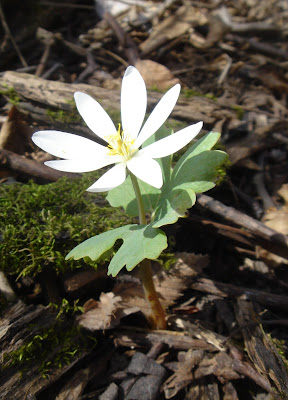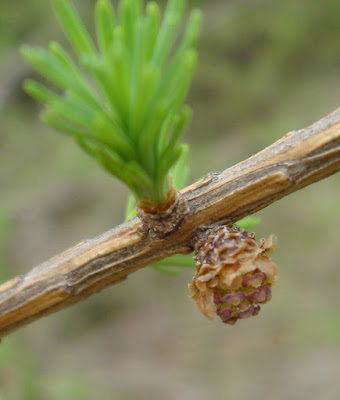4/30/2016
NestWatch
NestWatch, the citizen science project!
We look for cavity-nesting birds in trees as well as in nest boxes. A pair of Downy Woodpeckers has been excavating this hole overlooking the feeder gardens. Both will work at the nesting hole for up to three weeks. Their intent is to make a cozy cavity up to a foot deep in which to lay their eggs. They will line the bottom with woods chips. "Downies" usually lay 3 to 8 eggs; the eggs are white so the parents can see them in their dark cavity.
NestWatch

NestWatch!
Several nest boxes are in the yard and woods, waiting for cavity-nesting birds. Each box has a small video cam so we can watch the nest without disturbing the birds.
In this box a thick layer of moss was installed; then we saw grasses being laid in, re-arranged daily. The chickadee evidently laid her eggs over the past week, burying each one deep under the grass away from predators. Today, she started incubating them by gathering all seven and sitting close on them. A short flight outside revealed this treasure.
4/28/2016
4/19/2016
deciduous conifers
These new cones and needle-like leaves are emerging on our non-native European Larch Larix decidua. The old cones (at top in the photo) commonly remain on the tree for many years, turning dull grey-black. From a distance, the new cones look like rosey flowers on the Larch tree.
native deciduous conifers
Needle-like leaves (right) emerging in clusters, and new cones developing on the deciduous conifer American Larch Larix laricina. The seed cones will become 3/4" long, bright rosey red, and mature to lustrous brown scales containing the seeds.
The needle-leaves grow in dense clusters spirally on branches. They will glow bright green all summer, then turn golden before dropping in winter.
4/17/2016
viburnum
A very few of last year's berries remain on the American cranberry bush as colorful background for the new buds of this year's leaves. This Viburnum trilobum 'Hahs' produces high-pectin berries that hold well into winter and provide nourishing food for birds during cold months when insects are scarce.
4/15/2016
bloodroot
 Bloodroot. Thick juicy underground stems. Sap of blood red. Sanguinaria, its fitting Latin name, meaning blood red. But walking in the woods, you'll see innocent white flowers on pinkish stalks with a bright attractive center. The stem, leaf, and flower bud (in a neat wrapped bundle) are pushed up together through early Spring leaf litter. The delicate flower only lasts a day or two. Bees pollinate bloodroot. Once blossoming, it develops pod-like capsules that contain seeds. Ants harvest and spread the mature seeds.
Bloodroot. Thick juicy underground stems. Sap of blood red. Sanguinaria, its fitting Latin name, meaning blood red. But walking in the woods, you'll see innocent white flowers on pinkish stalks with a bright attractive center. The stem, leaf, and flower bud (in a neat wrapped bundle) are pushed up together through early Spring leaf litter. The delicate flower only lasts a day or two. Bees pollinate bloodroot. Once blossoming, it develops pod-like capsules that contain seeds. Ants harvest and spread the mature seeds.
Subscribe to:
Posts (Atom)





